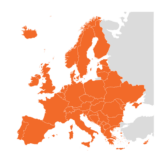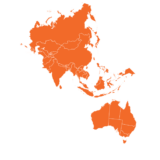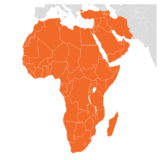Telemarketing has long been a cornerstone of direct customer engagement. Back then, a ringing phone piqued genuine curiosity. However, as consumers’ attitudes and expectations evolve, so must the strategies that drive successful campaigns.
For customer experience professionals, understanding how to adapt telemarketing practices to align with shifting generational and geographical preferences is crucial.

In this article, we delve into the recent evolution of telemarketing, offering insights tailored to help you navigate these changes and optimize your approach. By exploring how different generations and regions perceive telemarketing, we aim to equip you with the knowledge needed to enhance the relevance and effectiveness of your telemarketing efforts.
EVOLUTION OF TELEMARKETING
Origins of Telemarketing
The origins of telesales can be traced back to the United States in the 1950s, when companies, especially those in the publishing industry, began using the telephone to reach potential customers. These early campaigns, mainly focused on selling magazine subscriptions, marked the dawn of telesales as a direct method of selling products to consumers over the phone.

In these early days, operators used rotary phones to manually dial numbers from extensive lists, often relying on telephone directories as their primary source of contact information. This meant that the only segmentation available was based on mere geographical location, with no ability to target specific demographics or interests.
As a result, success heavily depended on the sales representatives’ persuasive abilities and persistence. Each call required time and effort, making it a labor-intensive process that lacked the precision and targeting capabilities seen in modern telemarketing.
An Industry Shaped By Technological Advances
As the decades progressed, telemarketing evolved significantly. The 1980s introduced computerized dialers, transforming the industry by automating the dialing process. These dialers could reach hundreds of numbers per hour, drastically improving efficiency and enabling telemarketers to reach a broader audience in less time.
During this period, telemarketing was a novel approach, and consumers were more receptive to calls, often curious about the new products and services being promoted directly to their homes.
A significant milestone in telemarketing occurred with the advent of Voice over Internet Protocol (VoIP) technology in the late 1990s and early 2000s. VoIP allows calls over the Internet rather than traditional phone lines, significantly reducing the costs associated with long-distance and international calls.
This innovation made it easier and more cost-effective for companies to conduct large-scale telemarketing campaigns and opened the way to offshoring the industry.
However, the rise of the internet, emails, and social media in the 21st century shifted customer preferences. Consumers became more selective about how they wanted to be contacted, changing how telemarketing strategies were deployed.

The Impact of Digital Evolution on Customer Expectations
With the advent of email, social media, and mobile phones, consumers are now bombarded with information from every angle. This led to a demand for more targeted and less intrusive marketing.
Today’s consumers expect a high level of personalization. They want interactions that feel relevant to their individual preferences.
Besides, with increasing concerns about data privacy, consumers are now more aware of how their information is used. Many countries have adopted laws and regulations to spotlight data protection, making consent a crucial part of the telemarketing strategy.
CUSTOMER BEHAVIORS BY GENERATION
Understanding customer behaviors across different generations can help tailor marketing strategies. Let’s break down how each generation interacts with telemarketing.

Baby Boomers (Born 1946-1964)
Baby Boomers often value traditional communication methods and are generally more receptive to telemarketing. They appreciate the personal touch of voice calls and highly value direct, respectful communication.
As this generation has adapted to some digital technologies, they still prefer phone calls over emails or social media when discussing serious matters. Their comfort with familiar methods makes them more likely to engage with telemarketing if approached with a warm, respectful phone call.

Generation X (Born 1965-1980)
Generation X is more skeptical of telemarketing. They appreciate clear, direct information without any fluff. They grew up during a time of significant technological change, making them comfortable with analog and digital communication.
While they may not favor unsolicited calls, they can be responsive to concise telemarketing that respects their time. Therefore, a succinct, honest pitch is vital for this group.

Millennials (Born 1981-1996)
Millennials are generally not fond of unsolicited phone calls. This tech-savvy generation prefers digital communication channels like emails, texts, and social media.
Transparency and relevance are crucial for millennials; they want to understand what’s in it and why it matters. Social proof also influences millennials, who tend to favor brands that demonstrate authenticity and align with their values.
To work with this group, telemarketing must be highly personalized and connected to their digital lives.

Generation Z (Born 1997-2012)
Gen Z is the least receptive to traditional telemarketing methods. Having grown up with smartphones and social media, this generation thrives on quick, digital interactions. They expect brands to understand their preferences and communicate authentically.
To be effective, telemarketing efforts must be integrated with digital strategies, such as text messaging or social media outreach, for Gen Z.
CUSTOMER BEHAVIORS BY GEOGRAPHICAL AREA
Consumer preferences also vary depending on the geographical area. Here’s a quick breakdown.

North America (USA + Canada)
In North America, regulatory scrutiny heavily influences consumer behavior toward telemarketing. The Telephone Consumer Protection Act (TCPA) provides robust protections, allowing consumers to avoid unwanted calls through mechanisms like the National Do Not Call Registry. Telemarketers must disclose their identity and provide a contact number, and calls are restricted to specific hours (usually between 8 a.m. and 9 p.m.).
North American consumers are often skeptical of telemarketing. They value interactions that respect their time and privacy, making compliance with the TCPA a legal requirement and a best practice for fostering consumer trust.

Europe
Stringent privacy regulations shape Europe’s telemarketing landscape, particularly the General Data Protection Regulation (GDPR). Under the GDPR, companies must have a lawful basis for processing personal data, including for telemarketing purposes. This regulation has made European consumers highly cautious about unsolicited calls, valuing transparency and consent.
However, the impact of these regulations can vary across countries:
- United Kingdom: Post-Brexit, the UK has maintained GDPR-like standards through the Data Protection Act 2018, making compliance crucial. The UK public is generally wary of unsolicited calls, and businesses often face heavy fines for non-compliance.
- Germany: Germany enforces some of the strictest telemarketing regulations in Europe. Consumers here are susceptible to privacy issues, and cold calling without explicit consent is generally prohibited.
- France: Telemarketing is allowed in France, but consumers have strong protections. The Bloctel list allows them to opt out of telemarketing calls, and companies must respect these preferences.
Overall, European consumers prefer a mix of digital and traditional communication methods, but only within strict privacy boundaries.

Asia-Pacific
The Asia-Pacific region presents diverse consumer behaviors due to varying cultural contexts and technological adoption rates. Mobile penetration is high and expected to reach 70% by 2030, significantly shaping telemarketing strategies.
Urban consumers in countries like Japan, South Korea, and Singapore are generally more receptive to telemarketing, especially if it is tailored to their specific needs.
However, in countries like India and China, where regulations are becoming stricter, there is a growing emphasis on consent and respecting consumers’ preferences. Telemarketers in the Asia-Pacific region must adapt their approaches to cater to different cultural norms and levels of technological engagement.

Latin America
In Latin America, consumers are generally more open to telemarketing, mainly when it includes a personal touch. Building relationships is crucial; consumers here value the direct human connection provided by voice calls over purely digital methods.
This preference is rooted in cultural norms that emphasize personal interaction and trust. However, telemarketers must also be mindful of emerging regulations that seek to protect consumer privacy, as some countries are adopting stricter laws inspired by the GDPR.

Middle East and Africa
Customer behavior in the Middle East and Africa can differ significantly depending on the country and cultural norms.
Mobile usage in these regions is on the rise. Data anticipates that there will be a whopping 700 million mobile connections by 2025.
This has significantly influenced telemarketing strategies. Telemarketers are now leveraging SMS and mobile app communications to reach consumers. These methods are effective because they can be quickly personalized.
Respect for cultural norms has also become crucial. Knowing the appropriate times to call and being aware of religious and cultural holidays can make interactions more meaningful.
=> If you are interested in telemarketing in a B2B context, read our article on B2B Appointment Setting: Proven Strategies To Boost Your Sales Pipeline
MODERN TELEMARKETING STRATEGIES
Telemarketing is no longer about dialing customers randomly and hoping for the best. Here’s how it’s changing things.
The Use of AI
Modern telemarketing leverages AI to predict which customers are more likely to respond positively. It analyzes customers’ browning history, purchase behavior, and social media activity. This means when you call, you’re not just guessing but reaching out to someone genuinely interested in your offer.
CRM Systems
They track every interaction, so you have a complete history at your fingertips. As such, you can personalize your approach. Customers are intrigued by businesses that adapt to their interests and previous purchase behavior.
Data Analytics
Analyzing crucial customer data helps you understand what works and what doesn’t. This way, you can make every call more innovative and more efficient.
Omnichannel Approach
Telemarketing is now part of a larger conversation. In addition to calling, you engage through emails, texts, social media, and more. This approach means you reach your customers where they’re most comfortable.
Put simply, you can call a customer, follow up with a personalized email, and, later, send a quick text about a special offer. It’s streamlined and keeps the dialogue going. McKinsey and Company highlights that “omnichannel customers shop 1.7 times more than shoppers who use a single channel. They also spend more.” Customers appreciate a seamless experience.

CHALLENGES IN CONTEMPORARY TELEMARKETING
There’s no rose without a thorn, and modern telemarketing is no different – it comes with challenges.
Regulatory Compliance
One of the most pressing challenges is staying compliant with strict regulations like the GDPR in Europe and the TTCPA in the United States. These laws impose strict rules on who can be contacted and when with severe penalties for non-compliance. The USA and Europe were early adopters and are currently inspiring many countries.
Companies must continually update their practices to respect consumer privacy rights and avoid hefty fines. This means telemarketers must always be vigilant, maintaining up-to-date knowledge of legal requirements and adapting their strategies accordingly(
Consumer Skepticism and Call Blocking
Another major hurdle is the growing skepticism among consumers. With the rise of spam calls and scams, people are likelier to block unknown numbers or avoid answering calls altogether. This saturation of unwanted calls has led to significant consumer backlash, with some households abandoning their landline telephones entirely to escape the constant barrage of unsolicited calls.
According to recent studies, the high volume of unwanted calls has contributed to declining landline use as consumers seek to protect their privacy and avoid nuisance calls.
To combat this, telemarketers need to personalize their approach. Understanding the specific needs and preferences of the person being called can transform a potentially unwelcome intrusion into a meaningful conversation.
Telemarketers can build trust and increase the likelihood of engagement by making interactions feel less like sales pitches and more like helpful discussions. Companies need to be more strategic in their outreach, using data-driven insights to contact consumers at the right time and with the right message, reducing the likelihood of contributing to this fatigue.
FUTURE TRENDS IN TELEMARKETING
The future of telemarketing is set to be shaped by emerging technologies and evolving consumer expectations. Here’s what to watch for:
- Predictive Analytics and AI
Predictive analytics and artificial intelligence (AI) will continue to play a pivotal role in telemarketing. These technologies allow telemarketers to anticipate consumer needs by analyzing vast amounts of data, including browsing history, past purchases, and engagement patterns.
By predicting which customers are more likely to respond positively to certain offers, telemarketers can reach out with highly personalized and relevant pitches at the right time, increasing the likelihood of a successful interaction.
- Warm Calling and Follow-Up Leads
Another key trend is the increasing focus on warm calling, which involves reaching out to prospects who have already shown interest in a product or service. This approach is more effective than cold calling because the customer is already familiar with the brand, making them more receptive to a conversation.
Similarly, following up on leads from previous interactions, such as website visits or inquiries, allows telemarketers to engage with customers when they are most interested, turning potential interest into actual sales.
- Integration with Omnichannel Strategies
Telemarketing is increasingly being integrated into broader omnichannel marketing strategies. This means telemarketing efforts are synchronized with other channels such as email, social media, and SMS.
For example, a telemarketing call might be followed by a personalized email or a text message with additional information, creating a seamless and cohesive customer journey. This approach ensures that customers are engaged in how suits them best, enhancing their overall experience and increasing conversion rates.
- Voice and Conversational AI
While traditional telemarketing relies heavily on human interaction, conversational AI advancements are beginning to augment these efforts. AI-powered assistants and chatbots can handle initial interactions, qualify leads, and gather information, freeing human agents to focus on more complex and high-value calls.
These technologies can also help ensure that telemarketing calls comply with regulations by accurately tracking and documenting consent.
- Data-Driven Personalization
As consumers demand more personalized interactions, telemarketers increasingly leverage data to tailor their calls. By analyzing customer data, telemarketers can craft messages that resonate with each individual’s specific interests and needs.
This level of personalization improves the effectiveness of telemarketing campaigns and builds stronger customer relationships by making each interaction feel unique and relevant.
- Regulatory Compliance Automation
Given the stringent telemarketing regulations, companies are adopting automated systems to ensure compliance.
These systems can automatically filter out numbers on do-not-call lists, track consent, and ensure calls are made within legally permitted hours. By respecting consumers’ privacy preferences, these systems reduce non-compliance risk and help maintain consumer trust.
ACTIONABLE INSIGHTS FOR CX PROFESSIONALS
Consider these practical tips to ensure the best possible outcome for your telemarketing strategy.
- Blend telemarketing with overall customer experience. Ensure your telemarketing team syncs with other departments so everyone’s on the same page. When customers get a call, they should feel like they’re talking to someone who genuinely understands them and isn’t reading from a script. Use insights from social media and previous interactions to tailor your approach.
- Create a feedback loop for constant improvement. Your telemarketing team hears directly from customers every day. Use this to your advantage by setting up a system where they can easily share feedback with the rest of the company. You could hold weekly meetings to discuss trends and common issues. This way, you always learn about your target and improve your approach.
- Use data to stay ahead of trends. Don’t just rely on gut feelings. Instead, use data to drive your decisions. You can analyze your call data to spot trends in customer behavior. Maybe you notice a spike in interest in a particular product or a common pain point. Use these insights to tweak your existing strategy.
- Personalize Interactions as Much as Possible Personalization is key to standing out in today’s crowded market. Tailor your interactions based on customer data, such as previous purchases, browsing history, or past interactions with your brand. This makes the customer feel valued and increases the likelihood of a successful outcome. Personalization can transform a generic sales pitch into a relevant conversation addressing each customer’s needs and preferences.
Conclusion
The days of blanket cold calls are over. With evolving customer expectations, the key to success is personalizing every interaction and making every call count.
You need to know your customers, anticipate their needs, and engage them through multiple channels. Telemarketers who will lead the way continuously adapt and connect on a human level.
If you seek to do the same, NAOS Solutions has your back. Our experts specialize in creating seamless, high-quality customer experiences that delight at every touchpoint. Let us help you achieve your business goals with strategies that align with your unique vision.

